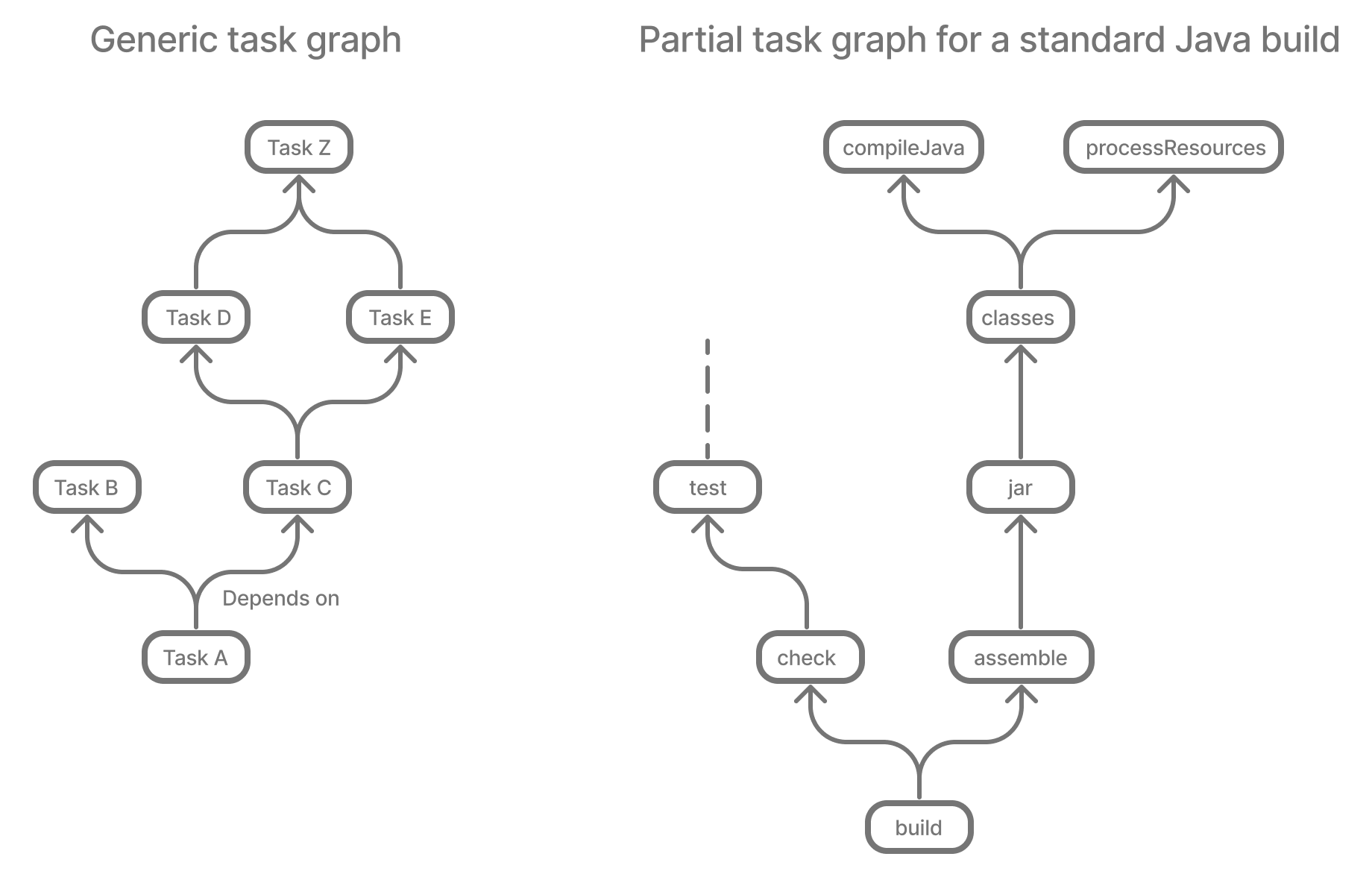

("Test: " + descriptor + " produced standard out/err: " listen to standard out and standard error of the test JVM(s) listen to events in the test execution lifecycleĭescriptor → logger.lifecycle("Running test: " + descriptor) show standard out and standard error of the test JVM(s) on the console set a system property for the test JVM(s) enable TestNG support (default is JUnit) The sample adle file as shown below it shows different configuration options.
#Gradle tasks code
Use the code given below to skip the excluded tests − Use the below mentioned code to run only the included tests − These methods can be used to specify, which tests should actually be run. The Test class has an include and exclude method. You can use the following code snippet in adle file to group test methods − The test task allows the specification of the JUnit categories, which you want to include and exclude. For grouping, JUnit test classes and methods JUnit 4.8 introduces the concept of categories. JUnit and TestNG allows sophisticated grouping of test methods. If you don't want to use test class detection, you can disable it by setting scanForTestClasses to false. Gradle also scans the inheritance tree into jar files on the test classpath. Class or a super class is annotated with Class or a super class contain a method annotated with When using TestNG, we scan for methods annotated with − The abstract classes are not executed.Class or a super class extends TestCase or GroovyTestCase.If any of the following criteria match, the class is considered to be a JUnit test class − When using JUnit, we scan for both JUnit 3 and 4 test classes. You can set custom includes / excludes and only those classes will be scanned.ĭepending on the test framework used (JUnit / TestNG), the test class detection uses the different criteria. The Test Task detects which classes are test classes by inspecting the compiled test classes. Before proceeding to the execution, it sets the debugger post to 5005. The test task provides a Test.getDebug() method that can be set to launch to make the JVM wait for a debugger.

To pass parameters to Gradle tasks, use the -P option.

Using Gradle in Data Hub To use Data Hub Gradle Plugin in the Data Hub flows, see Data Hub Gradle Plugin. The test task automatically detects and executes all the unit tests in the test source set., Once the test execution is complete, it also generates a report. The Gradle tasks available in Data Hub Gradle Plugin (ml-data-hub).


 0 kommentar(er)
0 kommentar(er)
